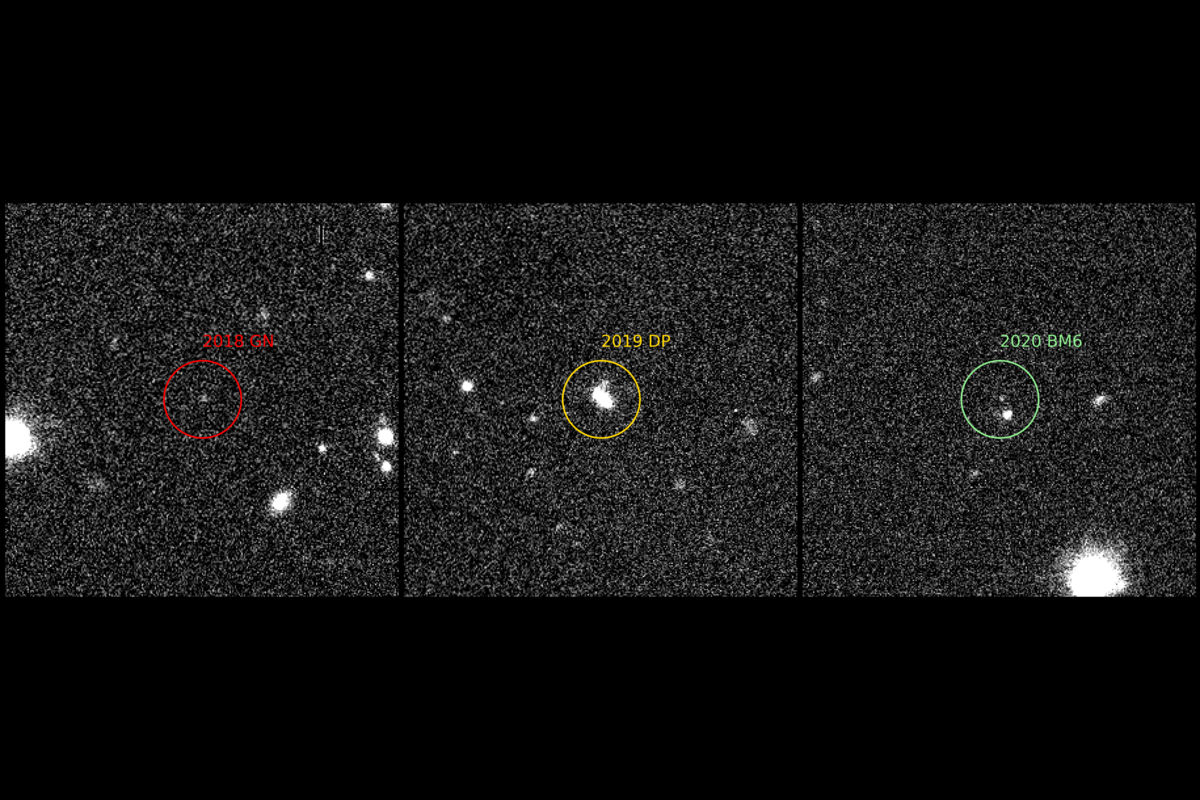

Thanks to Groningen astronomers, the list of asteroids that could ram into Earth in the coming century has become somewhat shorter.
If an asteroid or comet hits Earth, it could have huge consequences – just ask the dinosaurs. That is why the European space agency ESA and its American counterpart NASA are holding a Risk List with asteroids that have a chance of hitting our planet within a hundred years. Three copies of that list have recently been removed, which on closer inspection do not pose any danger to us.
This was possible thanks to the work of the Groningen astronomer Teymoor Saifollahi and colleagues. She screened hundreds of thousands of photosin search of so-called near-Earth objects: small objects that come close to the earth in their orbit around the sun.
Ten thousand candidate asteroids
The photos that the research focused on already existed. They were taken in recent years with the VLT Survey Telescopea telescope with a mirror of 2.61 meters in Chile, and its accompanying OmegaCAM, a 268 megapixel camera. “Those photos are in an archive; astronomers use them, for example, to study galaxies,” said Saifollahi. “We searched them for near-Earth snipers.”
In the photos, the astronomers found several tens of thousands of asteroids — not all of them near Earth. About ten thousand of those asteroids did not match known ones. They are now classified as candidate asteroids. Future research should reveal which are real and which are not.
No danger
In addition, Saifollahi and his team’s observations have helped to better determine the orbits of some potentially dangerous near-Earth objects. Three of them, 2018 GN, 2019 DP and 2020 BM6, turned out to have no chance of entering the next century.

Take 2019 DP. That asteroid was, as the name suggests, discovered in 2019. The Groningers also found the same asteroid in a photo from 2017, where it had gone unnoticed until then. Those two observations show that 2019 DP remains far enough away from Earth not to pose a threat to us.
Beautiful spectacle
Another near-Earth, 2021 FM2, turned out to be more likely to hit the Earth than previously thought. But, Saifollahi says reassuringly: “This is an object with a diameter of 3 meters. That won’t be the most dangerous thing ever. When such an asteroid passes through the Earth’s atmosphere, it breaks into pieces, much of which subsequently burns up in the atmosphere. That will be a nice spectacle rather than a disaster.”
And even if a 10-foot (3-meter) object were to hit Earth in its entirety, we’re not talking about a catastrophic disaster that will completely turn the planet upside down, Saifollahi added. “It damages an area the size of a city, or smaller. That doesn’t mean it will hit a city, of course. The earth is 70 percent covered with water, and much of the land is not densely populated either.”
The Groningen residents have not found the next ‘dino killer’ in the least.
Source material:
†Groningen astronomers remove three large near-Earth objects from the list” – Astronomie.nl
Teymoor Saifollahi (University of Groningen)
Image at the top of this article: Teymoor Saifollahi (RUG)/ESO/VST